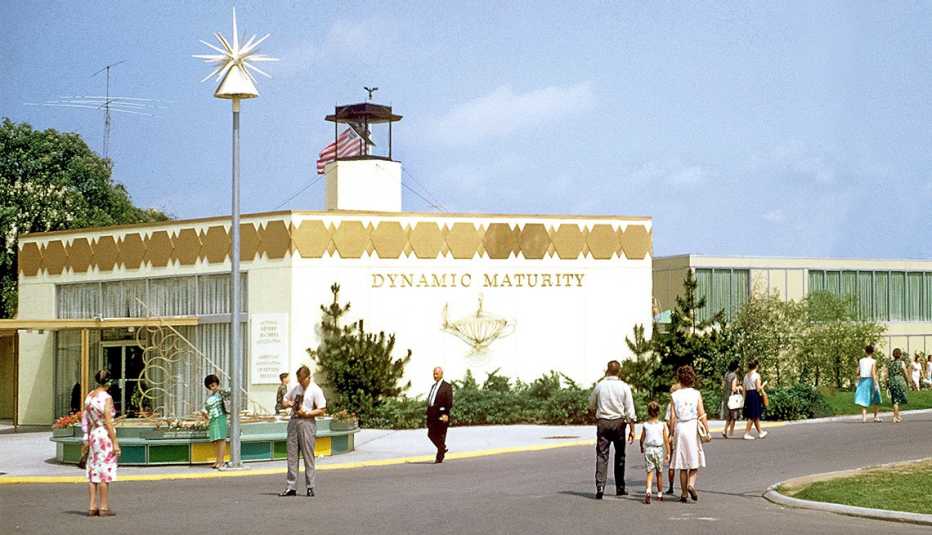AARP Hearing Center
The New York World’s Fair of 1964/65 opened in April 1964. Its theme was “Peace through Understanding.”
When the New York fair was being planned, Dr. Andrus asked, “What are the plans for the representation of the older folks?” It turned out no plans were being considered. “We were convinced,” she recalled, “that the [current] resurgence of faith in the potentialities of maturity was a great social revolution of much importance .... And so the decision was reached that the dynamic change of attitude toward age...must in this World’s Fair be featured accordingly.”
The Dynamic Maturity Pavilion opened on April 22, 1964. “Now,” explained Dr. Andrus, “people of all ages from all nations can see and learn of a dramatic new philosophy on aging: Dynamic Maturity! The Pavilion provides a unique showcase for the basic tenets of Dynamic Maturity — faith in the future; confidence in self; concern for others; and active participation in service.”


The Association of Retired Persons, International, AARP’s newly formed worldwide affiliate, sponsored the pavilion, along with AARP and its then-sister organizations, the National Retired Teachers Association (NRTA) and a charitable affiliate, the Retirement Research and Welfare Association.
Highlights of the Dynamic Maturity Pavilion included:
- Master Keys to Retirement – Here, by pressing a button, visitors could find answers to key questions that could help turn their queries into real possibilities.
- The Kurt Ard Gallery displayed 16 original human interest paintings by the famous Danish artist whose works had already appeared in Modern Maturity and NRTA Journal.
- The NRTA-AARP Service Showcase promoted the many important ways in which NRTA and AARP were serving members and all older persons through activities, benefits and services. (At the Travel Service exhibit, those age 55 and over could register to win a free trip for two to Europe.)
- A Camera Obscura provided an exciting panorama of the fair outside. A camera and mirrors on top of the pavilion reflected the action all around the building and focused it on a large screen below. It created, for some, such a strong sensation of being up with the camera looking down that they had to install railings near the screen for the benefit of those who became dizzy.
- The Hall of Fame celebrated the many great people who had received NRTA-AARP citations for their contributions to the enrichment of retirement living.
































































